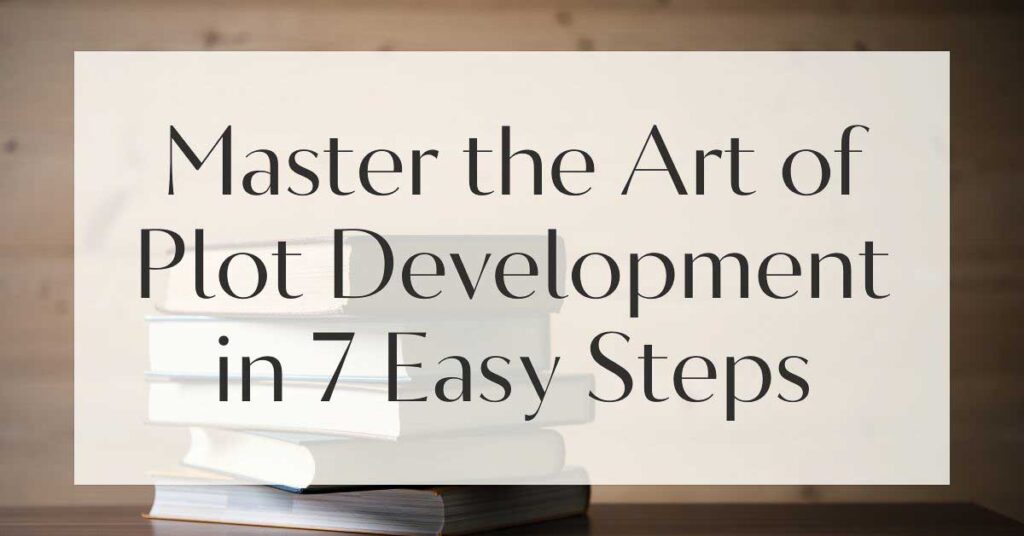Have you ever picked up a book, read the first line, and found yourself irresistibly drawn into its world? That’s the magic of a compelling opening line. These first few words are more than just an introduction; they are a promise of the adventure to come.
As writers, crafting that perfect beginning is both an art and a science. This guide will illuminate the nuances of creating captivating introductions that seize the reader’s attention from the get-go.
The Power of First Impressions
First impressions are as crucial in writing as they are in life. The opening line of your story or article is like a handshake with your reader—firm, inviting, and full of potential. It sets the tone, establishes the voice, and provides a glimpse into the world you’ve created.
An engaging introduction can mean the difference between a reader eagerly devouring your words or setting your work aside. Let’s explore why these initial words hold such power.
Why Opening Lines Matter
The importance of crafting compelling opening lines cannot be overstated. They are the bait on your hook, enticing readers to delve deeper into your narrative. A strong opening line does more than just introduce the story; it sets expectations and builds curiosity.
Consider iconic lines like “It was the best of times, it was the worst of times,” which instantly draws the reader into the contrasting worlds of Dickens’ tale. Such lines have a rhythm and resonance that make them unforgettable.
Moreover, these lines are often the most memorable part of a story. They linger in the minds of readers, sometimes even more than the plot itself.
A well-crafted opening line can encapsulate the essence of the entire narrative, offering a microcosm of the larger story. It’s this potent mix of intrigue and brevity that makes opening lines so pivotal in the realm of writing techniques.
Google Docs is for notes. Scrivener is for novels. Upgrade your writing game and try it for free today!

Emotional Resonance in Your First Sentence
An opening line that resonates emotionally can create an immediate bond with the reader. Whether it’s a sense of mystery, nostalgia, or humor, tapping into emotions can make your introduction more impactful.
Consider how a line like “Call me Ishmael” not only introduces a character but also evokes a sense of solitude and introspection. Emotional resonance invites readers to invest themselves in the journey ahead.
To achieve this, writers often employ vivid imagery or relatable scenarios. An evocative setting or a personal anecdote can paint a picture that readers can see, feel, or even smell.
By engaging the senses, you draw readers into your world, making them eager participants in the unfolding narrative. It’s about creating a sensory experience that lingers beyond the words on the page.
Think about the emotions you want to evoke with your opening line. Do you want to instill a sense of wonder, tension, or excitement? Tailor your word choice and sentence structure to reflect this emotion. A well-crafted sentence can transport readers into the scene, allowing them to feel what the characters feel.

Crafting Compelling Opening Lines
Creating an opening line that captivates isn’t just about stringing words together; it’s about creating a doorway into a new world. The techniques for engaging introductions vary widely, but they all share a common goal: to hook the reader. Let’s explore some strategies that can help you master this art.
Techniques for Engaging Introductions
One effective technique is starting with a surprising fact or statement that piques curiosity. This approach works well in both fiction and non-fiction, as it compels the reader to question and seek answers.
Another method is to begin in medias res, or “in the middle of things,” dropping the reader directly into the action. This creates an immediate sense of urgency and intrigue.
Additionally, using a strong, clear voice can set the tone and establish the narrator’s personality right from the start. Whether it’s a quirky character voice or a solemn narrator, the choice of voice should align with the story’s mood and theme.
These techniques, when combined with a unique perspective, can make your opening lines truly memorable.
Using Vivid Descriptions and Relatable Examples
Vivid descriptions are like a painter’s brushstrokes, bringing your opening line to life. By incorporating sensory details, you can transport readers to another place and time.
Descriptive language doesn’t just describe; it evokes emotions and sets the scene. Imagine an opening line that describes the smell of fresh rain on asphalt, instantly placing the reader in a specific moment.
Relatable examples, on the other hand, connect with the reader on a personal level. Sharing a common experience or feeling can create an instant rapport.
This technique is especially powerful in non-fiction, where personal anecdotes can lend authenticity and warmth to your writing. By weaving these elements into your opening lines, you craft a narrative that feels both real and engaging.
Use metaphors and similes to enhance your descriptions. Comparing one thing to another can provide clarity and add depth to your writing. A metaphor can turn an ordinary description into something extraordinary, offering readers a fresh perspective.
No marketing platform? No social following? No problem!
Publisher Rocket helps you market your debut novel like a pro.
It’s a gamechanger for debut authors – try it today!


The Role of Rhetorical Questions
Rhetorical questions are a clever tool for engaging readers right from the start. They provoke thought and invite the reader to ponder, setting the stage for deeper exploration.
A question like “What if the world as you know it ceased to exist tomorrow?” immediately sparks curiosity and prompts the reader to imagine the possibilities.
These questions also serve to establish a dialogue with the reader, breaking the fourth wall and making them active participants in the story. By posing a question, you’re not just telling a story; you’re inviting readers to join you in a quest for answers.
It’s a subtle yet powerful way to draw readers into the narrative, making them eager to uncover what’s next. Consider the types of questions that resonate with your audience. Are they philosophical, practical, or speculative?
Tailor your questions to the themes of your story, using them to guide readers’ thoughts and emotions. A well-placed question can act as a compass, directing the reader’s journey through your narrative.
Insights from Established Authors
Learning from those who have mastered the craft is invaluable. Established authors offer a wealth of knowledge and inspiration, their words echoing with the wisdom of experience. By examining their insights, we can glean lessons that enrich our own writing journeys.

Quotes to Inspire Your Writing Journey
Quotes from celebrated authors often encapsulate profound truths about the writing process. Consider Ernest Hemingway’s advice: “All you have to do is write one true sentence.
Write the truest sentence that you know.” Such words remind us of the power of authenticity in writing. They encourage us to seek truth in our narratives, crafting sentences that resonate with sincerity.
Similarly, Toni Morrison’s reflection, “If there’s a book that you want to read, but it hasn’t been written yet, then you must write it,” inspires us to embrace our unique stories.
These quotes are not just words of wisdom; they are calls to action, urging us to create with passion and purpose. They remind us that our voices matter and that our stories are worth telling.
Anecdotes that Illuminate the Craft
Stories about how famous authors crafted their opening lines can be both enlightening and motivating. For instance, J.K. Rowling’s journey from writing Harry Potter in cafes to becoming a literary icon is a testament to perseverance and creativity.
Her ability to craft a world with just a few lines is a skill that many aspire to emulate. Another anecdote worth noting is Stephen King’s method of revising his opening sentences multiple times until they felt just right.
His dedication to perfecting the start of his stories highlights the importance of patience and persistence in the writing process. These tales of triumph and toil remind us that the journey of writing is as important as the destination.
Feeling lost with your debut novel?
Fiverr Pro connects you with expert editors, designers, and marketers – everything you need to get your book ready for success!

Experimenting with Your Style
As writers, we are constantly evolving, experimenting with styles and techniques to find our unique voice. This journey of self-discovery is both challenging and rewarding, offering endless opportunities for growth and innovation.
Finding Your Unique Voice
Your voice is the fingerprint of your writing, distinct and unmistakable. Finding it requires exploration and experimentation, a willingness to step outside your comfort zone. It involves playing with different genres, perspectives, and tones until you find what resonates with you.
Don’t be afraid to draw inspiration from various sources—books, movies, music—and blend these influences into your work. Your voice is not static; it evolves with each story you tell.
Embrace this evolution, allowing your experiences and insights to shape your narrative style. It’s through this process that you discover the true essence of your storytelling.
Practice Makes Perfect: Writing Exercises
Writing, like any other skill, improves with practice. Regular writing exercises can sharpen your skills and enhance your ability to craft compelling opening lines.
One effective exercise is to rewrite the opening lines of your favorite books, putting your own spin on them. This not only hones your skills but also helps you understand the elements that make these lines effective.
Another exercise is to set a timer and write an opening line for a random scenario within five minutes. This encourages spontaneity and creativity, pushing you to think on your feet.
By incorporating such exercises into your routine, you can develop the agility and confidence needed to craft unforgettable beginnings. Dedicate a journal solely to experimenting with opening lines.
Jot down ideas, inspirations, and drafts without the pressure of perfection. This collection can serve as a valuable resource, offering a treasure trove of potential openings for future projects.

Embracing the Journey of Writing
The path of a writer is a journey of self-discovery, filled with challenges and triumphs. Embracing this journey means acknowledging both the highs and lows, learning from each experience, and celebrating every milestone along the way.
Overcoming Self-Doubt as a Writer
Self-doubt is a constant companion for many writers, whispering words of discouragement and uncertainty. Yet, overcoming this doubt is essential for growth. Recognize that self-doubt is a natural part of the creative process, not a reflection of your abilities.
To combat this, surround yourself with a supportive community of fellow writers who can offer encouragement and constructive feedback. Remember, every great writer has faced moments of doubt; it’s how you respond to these moments that defines your journey.
Embrace your imperfections and view them as stepping stones toward improvement.
Celebrating Small Victories in Your Writing
Every word written and every sentence crafted is a victory worth celebrating. In the pursuit of writing excellence, it’s easy to overlook these small achievements. Yet, they are the building blocks of your progress, each one a testament to your dedication and effort.
Take time to acknowledge these victories, whether it’s completing a chapter, receiving positive feedback, or simply finding the perfect opening line. Celebrating these moments fuels your motivation and reminds you of the joy that writing brings.
It’s this joy that sustains you through the challenges, guiding you toward the realization of your creative dreams.








